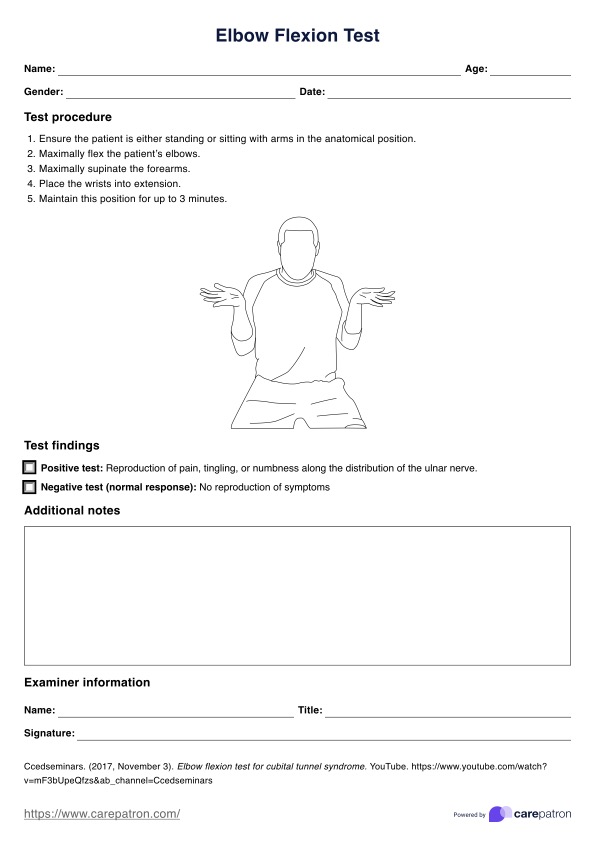The elbow flexor muscles include the biceps brachii (the biceps muscle which contains the biceps tendon) in the upper arm, primarily assisted by the brachioradialis and brachialis muscles. These muscles allows flexion at the elbow.

Elbow Flexion Test
Learn about the Elbow Flexion Test procedure for cubital tunnel syndrome and treatment options in our guide. Try our template now!
Use Template
Elbow Flexion Test Template
Commonly asked questions
Inability to fully bend from elbow extension at the elbow joint can result from conditions such as joint inflammation, injury, cubital tunnel syndrome, or arthritis.
Elbow flexion is measured using a goniometer, with one arm placed along the humerus and the other along the proximal forearm, then measuring the angle formed when the elbow is bent.
EHR and practice management software
Get started for free
*No credit card required
Free
$0/usd
Unlimited clients
Telehealth
1GB of storage
Client portal text
Automated billing and online payments











